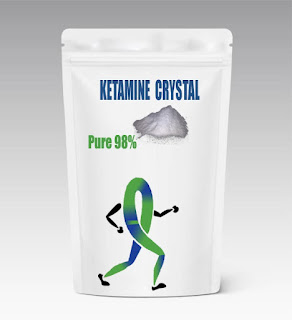Ketamine: Exploring Its Forms and Uses
Ketamine is a versatile medication with a storied history in the realm of anesthesia and pain management. Over the years, it has gained recognition for its unique properties, leading to various formulations, including ketamine nasal spray, ketamine liquid, and ketamine crystals. Each of these forms serves specific purposes in the medical field and beyond.
Ketamine Nasal Spray:
Ketamine nasal spray is a novel pharmaceutical formulation of ketamine that has garnered significant attention for its potential in treating mood disorders, such as depression and post-traumatic stress disorder (PTSD). This form of ketamine administration offers several advantages. The nasal spray provides a non-invasive and convenient method of delivery, making it more accessible for patients who may be averse to injections or intravenous infusions.
One of the key benefits of ketamine nasal spray is its rapid onset of action. Patients often experience relief from depressive symptoms within hours, a stark contrast to traditional antidepressants, which may take weeks to take effect. However, the duration of relief is relatively short-lived, typically requiring regular administration to maintain its therapeutic benefits.
Ketamine nasal spray has shown promise in not only treating mood disorders but also in managing chronic pain conditions and even certain types of migraines. The controlled and precise dosing facilitated by the nasal spray ensures that patients receive a consistent amount of ketamine, minimizing the risk of overuse or misuse.
Ketamine Liquid:
Ketamine in liquid form, typically administered via intravenous (IV) infusion, has a long-established history in medical practice. It is a potent anesthetic and analgesic agent used in surgical and emergency settings. Ketamine's dissociative properties make it invaluable for inducing anesthesia while maintaining vital functions, such as respiration and blood pressure.
In addition to its use in anesthesia, ketamine liquid has found applications in managing acute pain, especially in situations where traditional opioids may not be suitable or effective. Its rapid action and minimal suppression of respiratory function have made it a valuable tool in emergency departments and trauma care.
However, ketamine liquid has potential for misuse and abuse due to its dissociative and hallucinogenic effects. Therefore, it is tightly regulated and administered only by trained medical professionals in controlled settings.
Ketamine Crystal:
Ketamine crystals are the pure, solid form of ketamine. This crystalline substance is typically found in illicit markets and is associated with recreational use, often referred to as "Special K." It is important to note that the recreational use of ketamine can be dangerous and is illegal in many jurisdictions.
The purity and potency of ketamine crystals can vary widely, leading to unpredictable effects and potential health risks when used outside of a medical context. Ketamine crystals are sometimes ground into a powder and insufflated (snorted) or dissolved for injection, which increases the risk of overdose and adverse reactions.
In contrast to its recreational use, ketamine crystals are manufactured and distributed in highly regulated and controlled environments for medical purposes. When used under the supervision of healthcare providers, ketamine can be a valuable tool for managing various medical conditions, as discussed earlier.
In summary, ketamine in its various forms, including nasal spray, liquid, and crystal, serves distinct roles in the medical field. Ketamine nasal spray holds promise for treating mood disorders, while ketamine liquid is an indispensable tool in anesthesia and acute pain management. However, it is crucial to recognize the potential for misuse and abuse associated with ketamine crystals and to use this substance only under medical supervision where it is indicated and safe.



Comments
Post a Comment